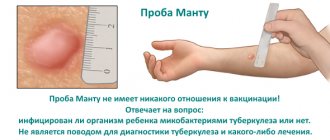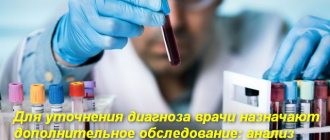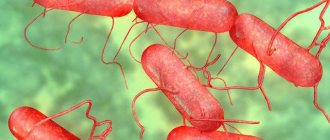Intoxication syndrome is a manifestation of a serious condition of the body that occurs under the influence of toxic substances against the background of weakened immune defense and reduced reparative processes. Toxins enter the bloodstream from the external environment or various loci of the body. This disease is quite common. Every person has experienced unpleasant manifestations of the syndrome at least once in their life. It occurs equally often in adults and children, regardless of gender and origin. The disease has an ICD-10 code: F19.0.
The most common cause of the syndrome is acute purulent infection. Pathogenic biological agents and a decrease in the body’s overall resistance are the main conditions for the development of a pathological process that manifests itself as severe intoxication. As a result of a nonspecific adaptive reaction of the macroorganism to microbial aggression, this symptom complex develops. In fact, there are many reasons for this condition. Depending on the etiology, the syndrome is divided into exogenous and endogenous:
- Exogenous syndrome develops under the influence of toxic substances that enter the body from the outside - with food, air or water.
- Endogenous intoxication syndrome develops in cancer, trauma, autoimmune and some other disorders. In this case, toxins are produced in the body independently.
Despite such a variety of causative factors, the result of the pathology is the same - a malfunction in the body, which is most clearly manifested in young children. Signs of poisoning are determined by the type of toxic substance, its quantity and the degree of damage to organs and tissues. The syndrome is manifested by fever, myasthenia and myalgia, weakness, physical inactivity, fatigue, hyperhidrosis, loss of appetite, and sleep disturbance. In patients, the functioning of the body's main regulatory systems is disrupted - nervous, endocrine, cardiovascular, immune, as well as vital organs responsible for detoxification - liver, kidneys.
Diagnosis of intoxication syndrome consists of collecting anamnestic data, studying clinical signs, conducting laboratory tests and instrumental studies. Of particular importance for determining the cause of intoxication are: general and biochemical blood tests, clinical urine analysis, ultrasound, radiography, CT and MRI. Treatment is selected by a specialist individually for each patient, taking into account the results of diagnostic procedures, age, body condition and the presence of concomitant diseases. Antimicrobial agents, antipyretics, immunomodulators, physiotherapeutic methods, diet therapy, vitamins, and adaptogens are usually prescribed.
Clinical symptoms of intoxication syndrome
The main clinical manifestations of intoxication syndrome include fever, low-grade body temperature, general weakness, lack of appetite, and deterioration of health. Significant intoxication leads to headache, nausea and vomiting, convulsions and delirium. If the disease lasts for a long period, the patient loses significant weight, and his general appearance worsens.
Intoxication syndrome is divided into moderate, moderate and severe.
Moderate syndrome is characterized by few general signs of the disease: low-grade or subnormal temperature, increased sweating, moderate weakness, decreased appetite. Moderate intoxication often results from disease of the lungs and bronchi. In severe syndrome, hectic fever, headache, nausea, convulsions, delirium, and intoxication psychosis are observed.
Clinical symptoms:
- Prolonged fever;
- Violation of microcirculation;
- Reduced blood pressure.
If a patient suffers from lung disease, most often he develops purulent-septic or purulent-resorptive syndrome. Incorrect therapy when taking antibacterial drugs can lead to infectious-toxic shock. Patients in whom intoxication has caused bleeding require surgical assistance.
Intoxication syndrome and its signs
Intoxication syndrome refers to pathological conditions, manifested by various symptoms. The negative process occurs due to toxic compounds that are formed inside the body. To cure intoxication syndrome, it is necessary to eliminate the provoking factor.
The occurrence of intoxication syndrome is caused by the penetration of toxic compounds into the body, and their concentration is important, as well as the level of immune defense.
Pathological conditions are usually caused by the activity of pathogenic microorganisms, the action of plant and animal poisons, caustic alkalis, acids and metals. You can poison the body with ethyl alcohol and narcotic substances, household chemicals and paint products. The triggering of intoxication mechanisms is caused by a toxic substance entering the bloodstream.
Signs of intoxication:
- Fever;
- Disturbances in the gastrointestinal tract;
- Tremor of the limbs;
- Cramps.
Exogenous intoxication syndrome can lead to hypoxia of brain cells. This is caused by the interaction of poisons with blood cells that supply tissues with oxygen. An increase in oxygen starvation leads to disruption of the regulation of vital processes.
Symptoms of intoxication syndrome
Intoxication syndrome appears due to infectious toxicosis, which occurs due to a decrease in the body's resistance. For the syndrome to develop, there must be a purulent infection in the body and reduced resistance of the body. Intoxication can be caused by the presence of purulent pleurisy, pleural empyema, peritonitis, osteomyelitis, sepsis, phlegmon, etc.
The first two weeks are characterized by general alteration, which affects all organs and tissues.
Neglect of the process leads to irreversible alteration. The intoxication syndrome goes through three stages, depending on which there are three degrees of severity of poisoning. Each stage has its own characteristic features.
The complex of symptoms of intoxication includes:
- Rapid breathing;
- Presence of wheezing;
- Brain swelling: euphoria or depression;
- Arterial hypotension, tachycardia.
At the second stage of intoxication, the patient suffers from impaired consciousness, respiratory failure, muscle pain, headache, chills, convulsions, nausea and vomiting, and decreased blood pressure. The third stage is characterized by severe chills, a strong drop in blood pressure, impaired consciousness, renal failure, frequent seizures and delirium. A mild degree of intoxication requires the patient to remain in bed, drink plenty of fluids and follow a diet. In severe cases, the patient is hospitalized, including the use of surgical methods.
Degrees of endotoxemia
- A mild degree of intoxication is characterized by a satisfactory condition of the patient. The clinical picture is not expressed. Pulse, respiratory rate, blood pressure are normal. Liver, kidney, and pancreatic enzymes rise to the upper limit of normal. The general blood test showed slight leukocytosis and increased ESR. Diuresis is not impaired.
- The average degree is manifested by changes in the skin (become pale), dry, and there may be rashes. The pulse rises to 100 beats per minute (the norm is 60-80), the respiratory rate is 20-30 (the norm is 16-20), blood pressure decreases slightly. In a biochemical blood test, the levels of kidney and liver enzymes increase. Diuresis decreases.
- Severe - characterized by the serious condition of patients. The clinical picture is manifested by symptoms of shock (low blood pressure, rapid pulse, tachypnea, anuria). Endogenous products poison the blood and internal organs, the patient falls into a coma. This condition can only be treated in intensive care.
Bacterial endotoxins: what is the danger
Endotoxins are toxic substances that are structural components of bacteria. The most common endotoxin representative is lipopolysaccharide. It belongs to the structural components of gram-negative bacteria, which are responsible for membrane stability.
These toxic substances are released as a result of cell breakdown and destruction from physical or chemical exposure.
Endotoxins can be present in the blood, a condition called endotoxemia. As a result of a strong immune response, the presence of endotoxins in the blood can cause septic shock. The level of endotoxins can be normalized using enterosorption.
What can an excess of endotoxins lead to:
- Hyperactivation;
- Increased production of inflammatory cytokines;
- Activation of the complement system.
All these processes can cause disseminated intravascular coagulation, acute multiple organ failure and endotoxin shock. Endotoxins have numerous pathogenic properties. The pathogenesis of diseases associated with a large number of bacterial enodoxins is called “endotoxin aggression”.
General information
Extensive damage to soft tissues due to prolonged compression was first described in 1864 by N. I. Pirogov. Pirogov included the presence of traumatic hemorrhages and smudges, local numbness, pressure or compression of tissues as features of the injury.
Similar changes in soft tissues in victims were described by Calmers in 1908 after the Messina earthquake.
In 1909, Zilberstein described nephritis, accompanied by albuminuria (excretion of protein in the urine) and hematuria (presence of blood in the urine exceeding the norm), in workers who suffered from prolonged compression of tissues.
Crush syndrome was first described in 1918 by the French surgeon Quenu, based on his experience during World War I.
British military doctor E. Bywaters, who was directly involved in the treatment of the wounded, also made numerous observations of victims of bombing during the Second World War. It was E. Bywaters who gave the name “crash syndrome” to the syndrome, which was identified in 3.5% of victims caught in the rubble.
Long-term compartment syndrome has also been studied:
- AND I. Pytel, who in 1945, based on observations of the wounded in Stalingrad, called the disease syndrome of crushing and traumatic compression of the limbs;
- M.I. Kuzin, who studied the consequences of the 1948 earthquake in Ashgabat and defended his doctoral dissertation on the topic of long-term crush syndrome in 1954;
- E.A. Nechaev, G.G. Savitsky and P.G. Bryusov, who participated in the treatment of victims after the earthquake in Spitak, where SDS accounted for about 28-30% of cases (M.M. Kirillov, who was also present, did not develop SDS).
American doctors also studied SDS after the terrorist attack on September 11, 2001.
The share of long-term compression syndrome in global disasters is increasing over time - if in 1948 the syndrome was detected in 5% of victims during the Ashgabat earthquake, then during the Spitak earthquake the number of victims with SDS exceeded 28%. The atomic explosions in Hiroshima and Nagasaki were also accompanied by a significant number of victims with SDS - their number reached 20%. This situation is associated with the growth of cities and the predominance of multi-story buildings in them.
Endotoxicosis disease - what is it (video)
Many factors lead to endogenous intoxication. Depending on the severity, there are three stages of intoxication. The practical application of knowledge about the symptoms of the syndrome will allow us to recognize signs of intoxication in time and begin timely therapy. Such conditions can only be treated under the supervision of the attending physician, who will conduct a comprehensive examination of the body before making a diagnosis.
Endogenous intoxication occurs as a result of the development of dangerous compounds inside the body. Under the influence of various factors, toxic compounds are formed, the action of which disrupts the normal functioning of internal organs. How does endogenous poisoning manifest itself? What treatments are most appropriate?
Possible complications
The source, which is a generator of harmful toxins in the body, cannot always be diagnosed accurately and on time. Detection of endogenous intoxication at an early stage in more than 30% of cases is accidental.
If detected in a timely manner, poisoning with self-generated poisons can be almost completely cured.
The second stage, as a rule, is characterized by the manifestation of certain symptoms that classify systematic toxic poisoning. Therapeutic measures at this stage of the disease become more complicated. It is proposed to detoxify the bloodstream using dialysis. Cases of recovery after going to a medical facility and receiving adequate care are approximately 90%. The third stage is the most dangerous, since intoxication can provoke serious complications. The functioning of organs is disrupted, up to their failure. If the source of infection is eliminated, as a rule, endogenous intoxication, even severe forms, can also be eliminated.
What it is
Endogenous poisoning in adults and children is caused by the presence of toxic substances in the body. Under the influence of various factors, the formation of poisons occurs, causing contamination of the vascular bed. Harmful substances accumulate in the tissues and cells of organs, resulting in inflammatory processes and serious poisoning.
The spread of the toxin throughout the body occurs quite quickly. People with weakened immune systems are most susceptible to such intoxication; such poisoning rarely occurs in a healthy person.
Endogenous forms of intoxication are included in the international classification of diseases, ICD-10 code – X40-49.
Poisoning of this type is classified by type - acute, subacute and chronic. The first two are characterized by a sharp manifestation of symptoms, the chronic form is characterized by the gradual development of negative signs.
Endogenous intoxication of the body develops when a toxin enters the bloodstream or lymph.
Video: endogenous detoxification (cleansing the body)
Read more:
Is computed tomography (CT) scanning harmful to human health?
7 best sorbents for cleansing the body: review and application
10 ways to strengthen your immune system
What is the best day to get pregnant?
How to make your nails healthy and beautiful
Article rating:
Share with friends:
You may also be interested in:
Stages of acute and chronic poisoning in adults and children - symptoms and consequences
What injections are given in case of poisoning?
Acute occupational chronic intoxication of the body - symptoms and treatment
How to get rid of dizziness due to food and alcohol poisoning
Stages of endotoxin poisoning
Endogenous type poisoning includes three stages of development. Each of them manifests itself with certain symptoms and signs.
Stages:
- First. This stage of intoxication is characterized by the absence of any clear manifestations of poisoning. Appears after interventions - surgical or mechanical. When conducting diagnostics, an increased content of leukocytes in the blood is determined, which indicates the development of inflammation.
- Second. At this stage, harmful microorganisms penetrate into the bloodstream and spread throughout all organs and systems. The intoxication stage is divided into two phases. At the first stage, the manifestation of negative symptoms, decreased functionality of organs, and impaired blood supply are diagnosed. During the second phase, pathological processes and serious complications in the functioning of organs are noted in the body.
- At the third stage, destruction of internal organs is noted, and failure of many organs develops. Treatment is aimed at maintaining the necessary functions.
Therapy for the endogenous form of intoxication is treated in a hospital setting under the supervision of specialists. It is impossible to cope with such diseases on your own; there is a risk of worsening the situation.
Mechanisms of the pathological process
When diagnosing using modern instrumental techniques and conducting studies of biological fluids, the mechanisms of action of endotoxins were identified. As a rule, intoxication occurs when they are combined or when one action is replaced by another . The developments of domestic specialists describe the following mechanisms of poisoning by endogenous toxins produced in the human body:
- Productive toxinemia. A significant change in the composition of biological fluids provokes changes in metabolism. Typically, this condition occurs when the endocrine system malfunctions, lack of vitamins and minerals, oxygen starvation of tissues, their degeneration and decomposition.
- Retention toxinemia. It develops as a result of a violation of the excretion of metabolic products from the body. For example, if pulmonary gas exchange decreases, then the concentration of carbon dioxide in the bloodstream increases, causing endogenous intoxication.
- Resorption toxinemia. When tissues decompose, protein breakdown products enter the internal cavities. This mechanism is characterized by rapid progression with deformation of bones, skin surfaces, mucous membranes, and soft tissues.
To determine endogenous intoxication, it is important not only to determine the provoking factor and species, but also the ability of harmful compounds to accumulate in the affected areas.
Some types of poisoning provoke necrotic tissue damage that will not recover even with timely medical care. But most toxins shift the balance in the body at the cellular level, which subsequently causes disturbances in the functional activity of one of the systems. Such changes are reversible after urgent therapy.
Sources of internal intoxication
Why does endogenous poisoning develop? Chronic inflammatory processes lead to the constant formation of toxic substances in the body by damaged cells. Therefore, people with such diseases are forced to take medications for a long time. The harmful compounds released provoke the appearance of an endogenous form of intoxication.
Connections:
- Metabolic products in increased volume,
- Metabolic products in increased concentrations,
- Components arising from the destruction of tissues and cells,
- Compounds arising from the oxidation of fat-soluble substances
- Increased content of elements involved in all life processes.
Diseases of the endocrine system can have an adverse effect. The formation of an increased amount of hubbub has an adverse effect on the human condition. The body's resistance decreases, which leads to inflammation and intoxication.
Acetonemic state of microbiome
Proper treatment with acetone. Acetonemic syndrome - complications and consequences. First aid for a child with increased acetone.
Acetonemic syndrome (AS) is a complex of disorders that cause metabolic disorders in a child’s body. The cause of the syndrome is considered to be an increased amount of ketone bodies in the blood. Ketone bodies are products of incomplete oxidation of fats. Acetonemic syndrome manifests itself as stereotypical repeated episodes of acetonemic vomiting and alternates with periods of complete well-being.
Signs of the disease appear at two to three years of age. They are more pronounced in seven- to eight-year-old patients, and disappear by the age of twelve.
Acetonemic syndrome ICD 10 - R82.4 Acetonuria
Which doctor treats acetone syndrome?
First of all, we turn to the pediatrician . Since acetone syndrome is a childhood disease, the doctor is a pediatrician. The doctor prescribes an examination by a psychotherapist, gastroenterologist, ultrasound, or prescribes a course of baby massage.
If acetone syndrome occurs in adults, we consult an endocrinologist or therapist.
Causes of poisoning
Why does endogenous poisoning occur? Often such intoxications are diagnosed after surgery. In this case, the causes of endogenous inflammation are considered to be blood loss, impaired breathing, and the influence of anesthesia.
In the absence of surgical interventions, other causes of such intoxication are identified.
Why does it happen:
- Extensive burns
- Prolonged compression of tissues, trauma,
- Inflammatory process in the pancreas in the acute phase,
- The presence of peritonitis,
- Oncological tumors,
- Benign formations that synthesize hormones.
Endogenous intoxication is often diagnosed after transplantation, when the body rejects the transplanted organ.
Mechanism and clinical picture
Carrying out a thorough diagnosis made it possible to determine the mechanism of development of endogenous intoxication. There are several similar methods.
Methods:
- Productive – increased formation of toxins during acute inflammatory processes in the body.
- Resorption - penetration into the bloodstream of elements formed in individual places of tissue destruction.
- Reperfusion - the mechanism is based on the penetration of compounds resulting from prolonged ischemia.
- Retentive - occurs due to a disruption in the functionality of organs that rid the body of harmful substances.
- Infectious – a violation of the microflora of the gastrointestinal tract, as a result of which pathological bacteria produce toxins.
To establish the exact mechanism, a thorough examination is carried out. In acute manifestations of intoxication, characteristic signs and symptoms are present.
Symptoms:
- Nausea, vomiting,
- intestinal disorder,
- Painful sensations in the abdomen,
- Convulsive manifestations
- Disruption of the nervous system,
- Irritability, nervousness,
- Trembling of limbs,
- Increase or decrease in pressure,
- Increased heart rate,
- State of chills, increased sweating,
- Feverish state
- Fever.
The subacute stage is characterized by the gradual development of symptoms. Negative consequences are minimal, health remains within normal limits.
Signs:
- Slight increase in temperature
- Disorders of the digestive system,
- Pain in the head, migraines,
- Sudden changes in pressure,
- Fatigue, state of apathy, constant drowsiness.
Chronic endogenous intoxication is diagnosed most often. Develops against the background of untreated diseases, decreased activity of cleansing organs and systems. Endogenous intoxication syndrome is often determined by heliotropic liver damage, sinusitis, and gastritis.
What happens:
- Dry skin,
- Weight loss,
- Violation of heart rhythm, blood pressure,
- Constant fatigue
- Chronic headaches,
- Sudden mood changes, irritability, nervousness,
- Malfunctions of the digestive system.
- Hair loss, brittle nails, increased secretion of sebaceous glands.
In all cases, there is a decrease in immunity, allergic reactions and autoimmune reactions often occur.
Acetonemic syndrome in children and adults: symptoms, diet according to Komarovsky
Psychotherapist of the highest category Oleg Viktorovich
49252
Update date: March 2020
Acetonemic syndrome is a complex of symptoms caused by metabolic disorders that result in the accumulation of ketone bodies in the blood. The disorder most often occurs in children.
The syndrome is characterized by vomiting, the smell of acetone, and abdominal pain. Treatment depends on the severity of the disorder.
If the syndrome is detected in a timely manner, non-drug therapy with diet is practiced.
What is acetone syndrome?
Acetonemic syndrome occurs mainly in children and is manifested by the presence of vomiting
The main supplier of energy for the normal functioning of the entire body is glucose. It enters the body when consuming any foods containing carbohydrates.
After assimilation of useful substances from food, some of the glucose is consumed immediately, and some is stored “in reserve”. Through several complex transformations, glucose is converted into glycogen, which is stored in the liver.
When the body lacks energy, it receives it from glycogen.
In some cases, when the body experiences increased stress, the reserves of glucose stored in the form of glycogen are quickly consumed and do not have time to be replenished.
In this case, a process called lipolysis is launched in the body, as a result of which protein begins to be consumed to provide tissues with energy.
Converting protein to glucose is a complex process that produces several different compounds, including ketone bodies.
Ketone bodies include three metabolic byproducts - acetone, acetoacetate and beta-hydroxybutyrate. In a healthy person, these substances are always present in the body.
However, if they begin to accumulate due to metabolic disorders, the load on the liver and kidneys increases, and ketoacidosis develops.
In other words, an excess of ketone bodies simply poisons the body, which causes the development of acetone syndrome.
Acetonemic syndrome occurs mainly in children. This is due to the characteristics of children's metabolism.
A child's glycogen reserves in the liver are quite small, so it is important for him to constantly ensure the necessary carbohydrate intake.
In adults, glycogen is synthesized and accumulated faster, its reserves are large enough to ensure normal and uninterrupted functioning of the body in case of increased stress.
Acetone syndrome as an independent disease is not included in the ICD-10 classification of diseases. Depending on the main manifestations, this disorder may be designated by code R82.4 (acetonuria) or E74 (carbohydrate metabolic disorders).
In newborns, the pathology may be indicated by the code P74.0, which indicates late metabolic acidosis (high levels of acetone).
Another code for acidosis that can be used for acetone syndrome in children and adults is E87.2.
Reasons for violation
The main cause of acetone syndrome in children is poor nutrition. If a child does not receive the required amount of carbohydrates, a decrease in blood glucose leads to the development of this syndrome. Moreover, the trigger for the start of the process of converting proteins and fats into “fuel” for the body is any condition accompanied by increased load. Among them:
- strong physical activity;
- stressful situations;
- liver dysfunction;
- eating fatty heavy foods;
- infectious and inflammatory diseases;
- endocrine disorders;
- pathology of the pancreas;
- neurological disorders.
Acetone syndrome in adults is much less common; children under 13 years of age most often experience the problem. Cases of acetone syndrome in children in the first months of life are associated with congenital endocrine disorders leading to impaired carbohydrate metabolism.
Acetonemic syndrome in adults can occur for the following reasons:
- chronic stress;
- severe intoxication of the body;
- renal failure;
- long-term fasting or protein diet;
- endocrine disorders.
In addition to the above reasons, acetonemic syndrome can occur against the background of insulin deficiency. High levels of ketone bodies are observed in diabetes mellitus.
If acetone syndrome in children is most often a consequence of poor nutrition and has nothing to do with diabetes, the sudden appearance of signs of this disorder in an adult is the basis for undergoing diagnostics in order to exclude the development of type 2 diabetes.
With acetonemic syndrome, the symptoms manifest themselves clearly and require urgent measures. In general, timely treatment allows you to quickly cope with the disorder without developing negative consequences.
Symptoms of the syndrome
Typical symptoms of acetonemic syndrome are acetonemic crises: lack of appetite, nausea, lethargy
In acetone syndrome, the symptoms are associated with intoxication of the body with acetone and other ketone bodies, so the main symptom is repeated vomiting.
Acetonemic syndrome in a child can manifest itself several times. As a rule, the first episode of this disorder is observed at the age of 2-3 years, when the baby is gradually transferred to “adult” food. Signs of a violation in this case are associated with the fact that the child’s body cannot yet fully absorb the diet of an adult, so it is necessary to carefully draw up the baby’s menu.
Recurrence of this disorder is most often diagnosed at the age of 6-8 years. This is due to the excessive physical activity that children are often exposed to during outdoor games. The disorder may appear between the ages of 8 and 12, when children begin to experience severe stress during school. As a rule, the syndrome goes away by the age of 13.
Typical symptoms in children
Symptoms and signs of acetone syndrome in a child are as follows:
- acetonemic vomiting syndrome;
- emotional lability;
- strong smell of acetone from the mouth;
- dyspeptic disorders;
- migraine.
Acetonemic vomiting syndrome is severe nausea after ingesting food or water. This is followed by repeated vomiting, leading to dehydration. Dehydration entails the development of muscle hypotonia, pale skin with a bright blush, and muscle cramps.
Emotional lability is characterized by a sharp change from excitement to drowsiness.
Acetonemic syndrome develops in several stages. First, the baby does not eat properly for a long time, then loses his appetite. This is followed by emotional instability, weakness, and attempts to feed or drink the child lead to profuse vomiting.
As a rule, before the appearance of acetonemic vomiting, the child feels severe irritation, agitation, and behaves nervously. Attacks of vomiting exhaust him, apathy, drowsiness, and headache appear. With acetone syndrome, sleep deterioration is observed, the baby may complain of insomnia or nightmares.
In severe cases, body temperature may rise to 38.5 degrees. Children often experience stomach pain, flatulence, and loose stools.
Important! A specific sign of this syndrome is a pronounced odor of acetone from the child’s vomit, urine, skin, sweat and mouth.
Manifestations in adults
In adults, the pathology is accompanied by headaches and dizziness.
The symptoms and manifestations of acetonemic syndrome in adults are somewhat different from the signs of this disorder in children. Acetonemic syndrome is manifested by the following symptoms:
- tachyarrhythmia;
- pale skin;
- severe fatigue;
- frequent vomiting;
- dizziness;
- spastic pain in the abdominal area;
- dehydration.
Heart rhythm disturbances, general weakness and dizziness are caused by a strong decrease in blood glucose levels.
Why is acetone syndrome dangerous?
Timely identified acetonemic syndrome can be successfully treated and does not have a negative effect on the child’s body in the future.
Mild forms of this disorder are more likely not a pathology, but rather peculiarities of the functioning of the child’s body.
With the right approach to treatment, the pathology disappears without a trace by adolescence; the main thing is to consult a doctor in a timely manner, carry out a differential diagnosis and follow a special diet.
At the same time, a long course of acetonemic syndrome is potentially dangerous by the development of dangerous disorders, including hypoglycemic coma. In advanced cases, there is a risk that the metabolic disorder will remain with the person for life, which is potentially dangerous for the development of type 2 diabetes mellitus, gout, and urolithiasis in older age.
Treatment methods
A sudden exacerbation of the syndrome and the appearance of repeated vomiting is a reason for urgent hospitalization of a person. This condition is called acetone crisis and requires hospital treatment.
Therapy in a hospital setting is aimed at restoring the body’s water and electrolyte balance, as well as relieving acute symptoms. As a rule, acetonemic syndrome subsides after 2-3 days.
At home, you need to rinse your stomach and do a cleansing enema. Next, the child or adult should take enterosorbents, and be sure to drink clean water in small portions every 10-20 minutes.
The main treatment at home is diet. The menu for acetone syndrome in children should be balanced, meals should be frequent, and portions should be small. It is imperative to monitor your fluid intake. Since repeated vomiting leads to dehydration, it is important to ensure your baby drinks plenty of fluids.
Diet for children
Low-fat dairy products are very useful for children with acetone syndrome
Nutrition in acetonemic syndrome plays a vital role, however, the diet is prescribed between attacks, but an acute crisis must be stopped with medication, in a hospital setting.
For acetone syndrome in children, the main part of the menu consists of the following dietary products:
- wheat crackers;
- lean dietary meats;
- 1 egg daily;
- low-fat dairy products;
- steamed potatoes, zucchini, carrots;
- slimy porridge.
As a rule, doctors prescribe the “Table No. 5” diet.
Recommendations of Dr. Komarovsky
In general, Komarovsky’s recommendations for an acute attack of vomiting do not differ from the treatment methods practiced by all pediatricians and therapists. But between attacks of acetone syndrome, Dr. Komarovsky advises:
- limit the consumption of animal fats;
- take nicotinamide (vitamin PP);
- monitor the amount of fluid consumed;
- follow the diet.
The doctor also advises taking antiemetic drugs in injections for severe vomiting, but only a doctor can choose a medicine during an in-person appointment, ruling out diseases with similar symptoms.
Endogenous intoxication: diagnosis and treatment
Before selecting the appropriate treatment, a detailed diagnosis is carried out in a medical institution. The examination includes various procedures to determine the cause of endogenous poisoning.
Examinations:
- CT scan,
- Magnetic resonance imaging,
- Ultrasound examination of internal organs,
- Taking x-rays using contrast agents,
- Electroencephalographic examinations,
- Blood tests, urine tests and others.
After determining the exact cause of intoxication, the necessary treatment is selected. If acute symptoms occur, it is necessary to call doctors and, if possible, provide first aid to the victim using detoxification drugs.
Irritation, a feeling of sand in the eyes, redness are only minor inconveniences with impaired vision. Scientists have proven that decreased vision in 92% of cases ends in blindness.
Crystal Eyes is the best remedy for restoring vision at any age.
Treatment includes first aid and certain procedures aimed at cleansing the body.
Procedures:
- Administration of special medicinal solutions,
- Carrying out hemosorption, hemodialysis,
- Washing the stomach and intestines using a probe,
- Prescription of sorbents, medicines that restore the functioning of the body,
- Use of antibacterial drugs,
- Selection of suitable minerals, vitamins, immunostimulants.
A special diet is selected that does not have a severe effect on the digestive system; it is recommended to consume more vegetables and fruits.
Treatment
All patients undergo detoxification therapy, regardless of the cause of the pathology and the condition of the body. The intensity of treatment measures can vary from plenty of fluids and oral rehydration to infusion of polyionic solutions. The choice of therapeutic intervention is determined by the severity of clinical manifestations and the severity of the syndrome.
- The first recommendation of specialists is to ensure the patient rest and adhere to bed rest. It is advisable to limit TV viewing. Patients should get adequate sleep. In this case, you should sleep in a clean and ventilated room, in which intoxication products released through the patient’s sweat should not accumulate. The air in the room must be humidified, especially in the cold season, when heating devices and heaters are operating.
- The nutrition of patients with intoxication should be gentle. Easily digestible foods conserve energy, which the body can use to fight toxic substances. Patients are prohibited from fried foods, fatty meat foods, and sweets. The diet must include dairy products, vegetables and fruits, and cereals. Such a diet will relieve the load on the liver, the organ that performs the detoxification function, and will also facilitate the functioning of the gastrointestinal tract. If the patient has no appetite, at first you can limit yourself to low-fat chicken broth with crackers and drink plenty of fluids.
- A properly designed drinking regimen in some cases allows you to cope with intoxication without the use of medications. This happens with a banal acute respiratory infection, manifested by low-grade fever, signs of rhinitis and pharyngitis. The disease usually resolves without the use of antimicrobial and antipyretic drugs. Patients are recommended to drink fruit drinks, compotes, herbal teas, and clean still water. Decoctions of dried fruits, rose hips, chamomile, raspberries and linden remove toxins due to their diuretic and diaphoretic effects.
Drug treatment is prescribed by the doctor, taking into account the identified cause of the pathology. To get rid of the unpleasant symptoms of intoxication, it is necessary to eliminate all etiological factors. The main goal of therapeutic measures is detoxification and reduction of body temperature.
At home, in case of food poisoning, patients wash their stomach. This helps remove toxic substances and food debris containing them from the body. For the procedure, you need to take a liter of warm water, dissolve a teaspoon of soda in it or make a weak solution of potassium permanganate. The product should be drunk and vomited. Gastric lavage is carried out until clean water appears. Then you should do a cleansing enema with cold water. This procedure will help quickly remove toxins from the intestines. Patients take enterosorbents orally - "Pipolfen", "Polysorb" or "Enterosgel" and go to bed. To prevent dehydration caused by vomiting and diarrhea, drink plenty of fluids. If there is no improvement, the symptoms of poisoning intensify, and signs of dehydration of the body appear, you must call an ambulance.
In the hospital, infusion therapy is carried out - a solution of glucose, albumin, plasma, Reopoliglyukin, Hemodez-N, Reamberin, Gelatinol is administered intravenously. To more quickly remove toxins from the body, blood transfusion therapy is carried out - transfusion of blood substitutes and donor blood. Oral detoxification consists of taking “Regidron”, “Gastrolit”. These drugs prevent dehydration and restore water and electrolyte balance. Diuretics - Furosemide, Mannitol, Veroshpiron - will help speed up the process of removing toxins. After using sorbents and droppers, pre- and probiotics are used that normalize the intestinal microflora - “Linex”, “Bifiform”, “Acipol”; enzyme preparations that improve the digestion process - “Pancreatin”, “Creon”, “Festal”; multivitamin complexes and antioxidants. In severe cases, extracorporeal blood purification is used - plasmapheresis, hemosorption, hemodialysis.
If the cause of the syndrome is an infection, patients are prescribed antibacterial and antiviral drugs. Symptomatic therapy consists of the use of antipyretics - Nurofen, Paracetamol, immunomodulators - Immunorix, Ismigen, Lykopida, antihistamines - Suprastina, Tavegil, Cetrina. Currently, complex preparations containing ascorbic acid, anti-inflammatory and antiallergic substances have become widely popular. These include: “Rinicold”, “Coldax Flu plus”, “Rinzasip”.
For bites from poisonous insects, snakes and other animals, as well as for poisoning by chemicals, patients are injected with a serum or antidote. All patients, regardless of the etiology of the syndrome, are prescribed drugs that normalize the functions of the affected organs. In severe cases with the development of encephalopathy or toxic shock, intensive therapy is carried out in the intensive care unit.
Consequences and prevention
In the absence of proper treatment, a person may experience various complications and negative consequences. As a rule, the appearance of various diseases, kidney and liver failure, and blood poisoning is noted.
Endogenous poisoning will not occur if you lead a healthy lifestyle, do not have bad habits, and treat diseases in a timely manner. There are no specific preventive measures.
Endogenous intoxication can develop in any person. The reasons for this phenomenon are different. It is recommended to pay attention to diseases in a timely manner and not to delay treatment.
Acetonemic state microbiome 10
Proper treatment with acetone. Acetonemic syndrome - complications and consequences. First aid for a child with increased acetone.
Acetonemic syndrome (AS) is a complex of disorders that cause metabolic disorders in a child’s body. The cause of the syndrome is considered to be an increased amount of ketone bodies in the blood. Ketone bodies are products of incomplete oxidation of fats. Acetonemic syndrome manifests itself as stereotypical repeated episodes of acetonemic vomiting and alternates with periods of complete well-being.
Signs of the disease appear at two to three years of age. They are more pronounced in seven- to eight-year-old patients, and disappear by the age of twelve.
Acetonemic syndrome ICD 10 - R82.4 Acetonuria










